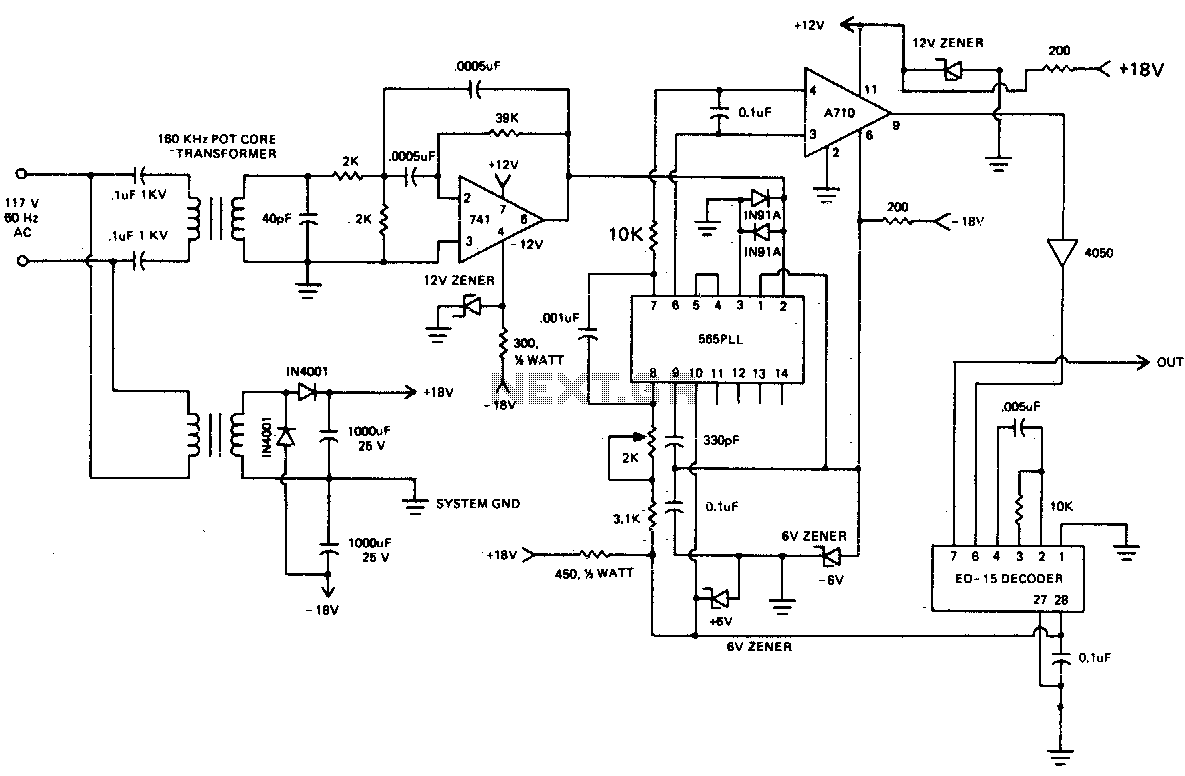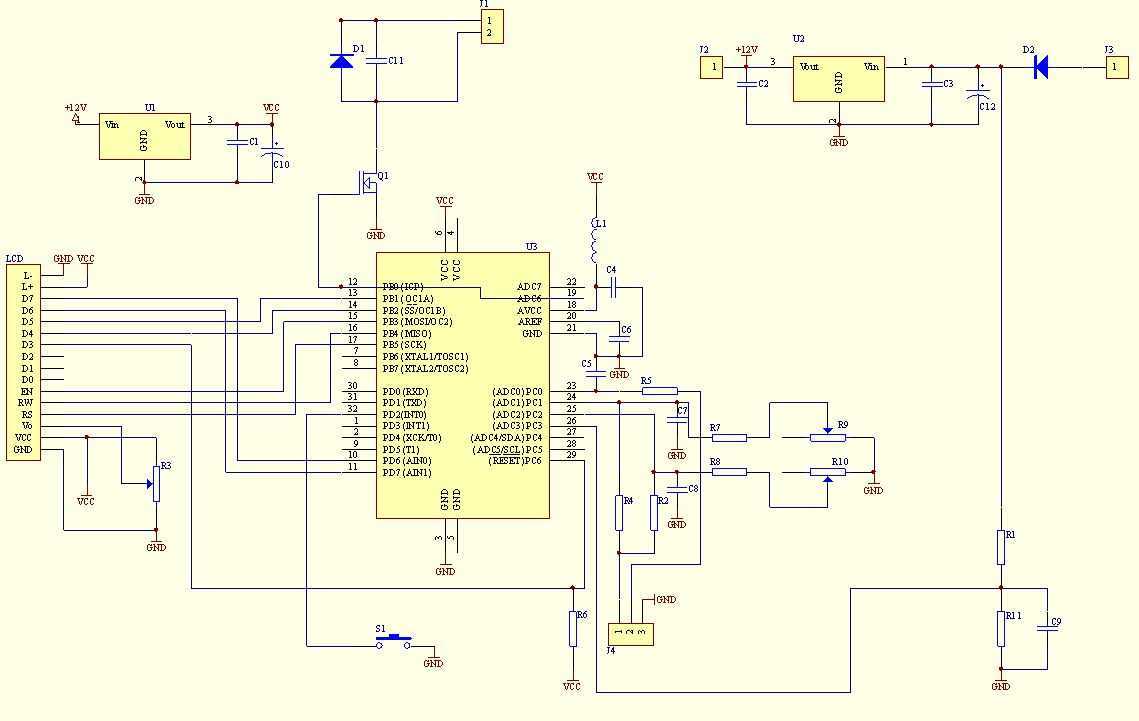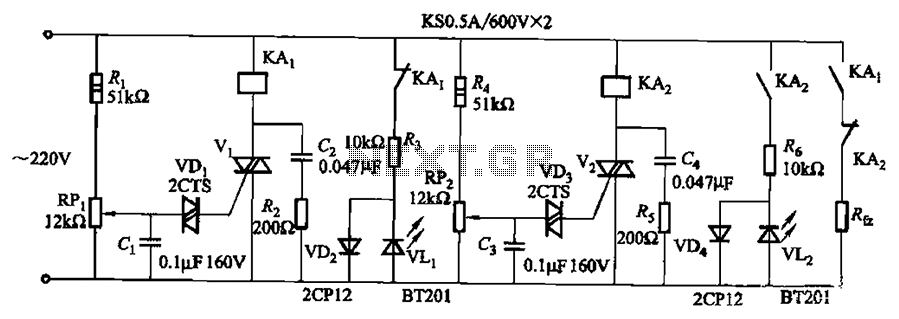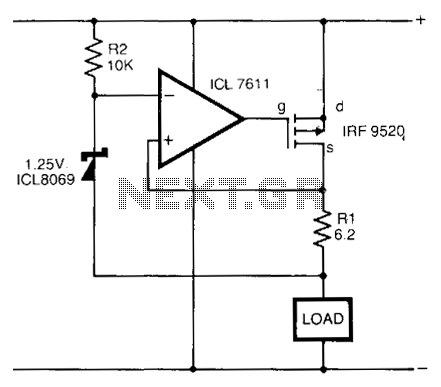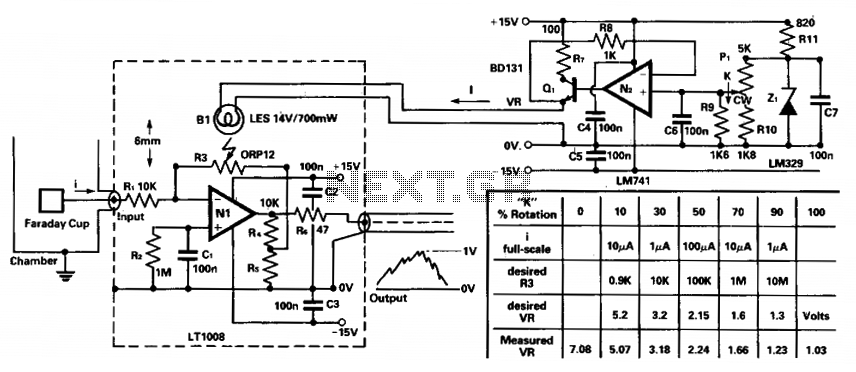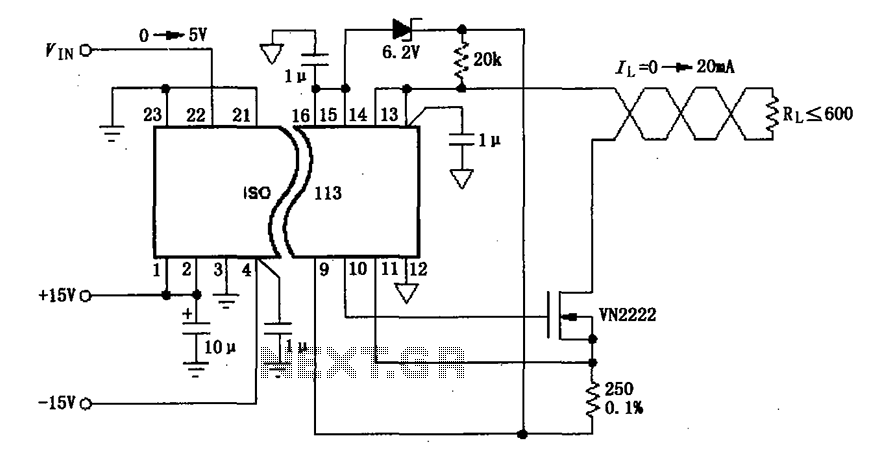
voltage to current convertor
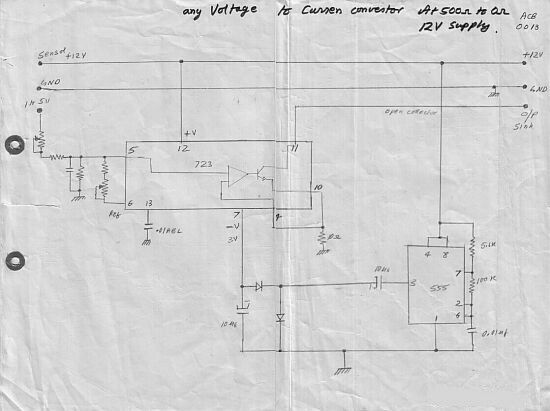
This circuit converts a voltage control output from a process controller into a current control signal, suitable for applications such as AC drives or valves requiring a current control signal. It operates as a three-wire voltage-to-current loop converter. The 1-5 V DC input is attenuated and fed to pin 5 of the LM723 operational amplifier section, which aims to maintain the same voltage at pin 10 across the 10 E resistor. This configuration produces an open collector constant current sink that is proportional to the 1-5 V input. By adjusting the attenuator, the 1-5 V input can be scaled and calibrated to produce a 4-20 mA output, allowing for the connection of multiple instruments in series, such as controllers, recorders, or PLCs. With a supply voltage of up to 24 V, it is possible to loop three instruments. Additionally, a connection to pin 6 is necessary to convert a 0-1 V input to a 4-20 mA output.
The circuit effectively facilitates the conversion of voltage signals into current signals, which is essential for many industrial applications where current loops are standard. The LM723 operational amplifier is a versatile component that provides stable performance in this configuration. The use of an open collector output allows for easy integration into existing systems without the need for complex interfacing.
The design includes an attenuator that can be finely adjusted to ensure accurate scaling of the input voltage range. This is particularly useful in scenarios where precise control is necessary, as it enables the conversion of the standard 1-5 V input into the widely accepted 4-20 mA current loop standard. The ability to loop multiple instruments is a significant advantage, as it simplifies wiring and reduces the number of power supplies needed in the system.
The circuit's power supply requirement of up to 24 V is adequate for most industrial applications, and the design allows for the cascading of three instruments, enhancing its utility in complex control systems. The connection to pin 6 for converting a 0-1 V input to a 4-20 mA output further broadens the circuit's application range, making it suitable for various sensors and input devices that operate within this voltage range.
Overall, this voltage-to-current loop converter circuit provides a robust solution for converting control signals in industrial automation systems, ensuring compatibility with a wide range of instruments and devices.his Circuit converts a voltage control output from a Process Controller to be converted into a Current Control if the AC-Drive or Valve needs a Current Control Signal. This is a three wire voltage to current loop converter. The 1-5 V DC is attenuated and fed to pin 5 LM723 opamp section which tries to maintain the same voltage at pin 10 across the
10 E, thereby producing a open collector constant current sink proportional to the 1-5V input. By trimming the attenuator you can scale-calibrate 1-5V input to 4-20mA output for looping many instruments in series, like a controller, recorder or PLC. With a supply voltage upto 24V, three instruments can be looped. The connection to pin 6 is required to convert 0-1 input to 4-20mA. 🔗 External reference
The circuit effectively facilitates the conversion of voltage signals into current signals, which is essential for many industrial applications where current loops are standard. The LM723 operational amplifier is a versatile component that provides stable performance in this configuration. The use of an open collector output allows for easy integration into existing systems without the need for complex interfacing.
The design includes an attenuator that can be finely adjusted to ensure accurate scaling of the input voltage range. This is particularly useful in scenarios where precise control is necessary, as it enables the conversion of the standard 1-5 V input into the widely accepted 4-20 mA current loop standard. The ability to loop multiple instruments is a significant advantage, as it simplifies wiring and reduces the number of power supplies needed in the system.
The circuit's power supply requirement of up to 24 V is adequate for most industrial applications, and the design allows for the cascading of three instruments, enhancing its utility in complex control systems. The connection to pin 6 for converting a 0-1 V input to a 4-20 mA output further broadens the circuit's application range, making it suitable for various sensors and input devices that operate within this voltage range.
Overall, this voltage-to-current loop converter circuit provides a robust solution for converting control signals in industrial automation systems, ensuring compatibility with a wide range of instruments and devices.his Circuit converts a voltage control output from a Process Controller to be converted into a Current Control if the AC-Drive or Valve needs a Current Control Signal. This is a three wire voltage to current loop converter. The 1-5 V DC is attenuated and fed to pin 5 LM723 opamp section which tries to maintain the same voltage at pin 10 across the
10 E, thereby producing a open collector constant current sink proportional to the 1-5V input. By trimming the attenuator you can scale-calibrate 1-5V input to 4-20mA output for looping many instruments in series, like a controller, recorder or PLC. With a supply voltage upto 24V, three instruments can be looped. The connection to pin 6 is required to convert 0-1 input to 4-20mA. 🔗 External reference
